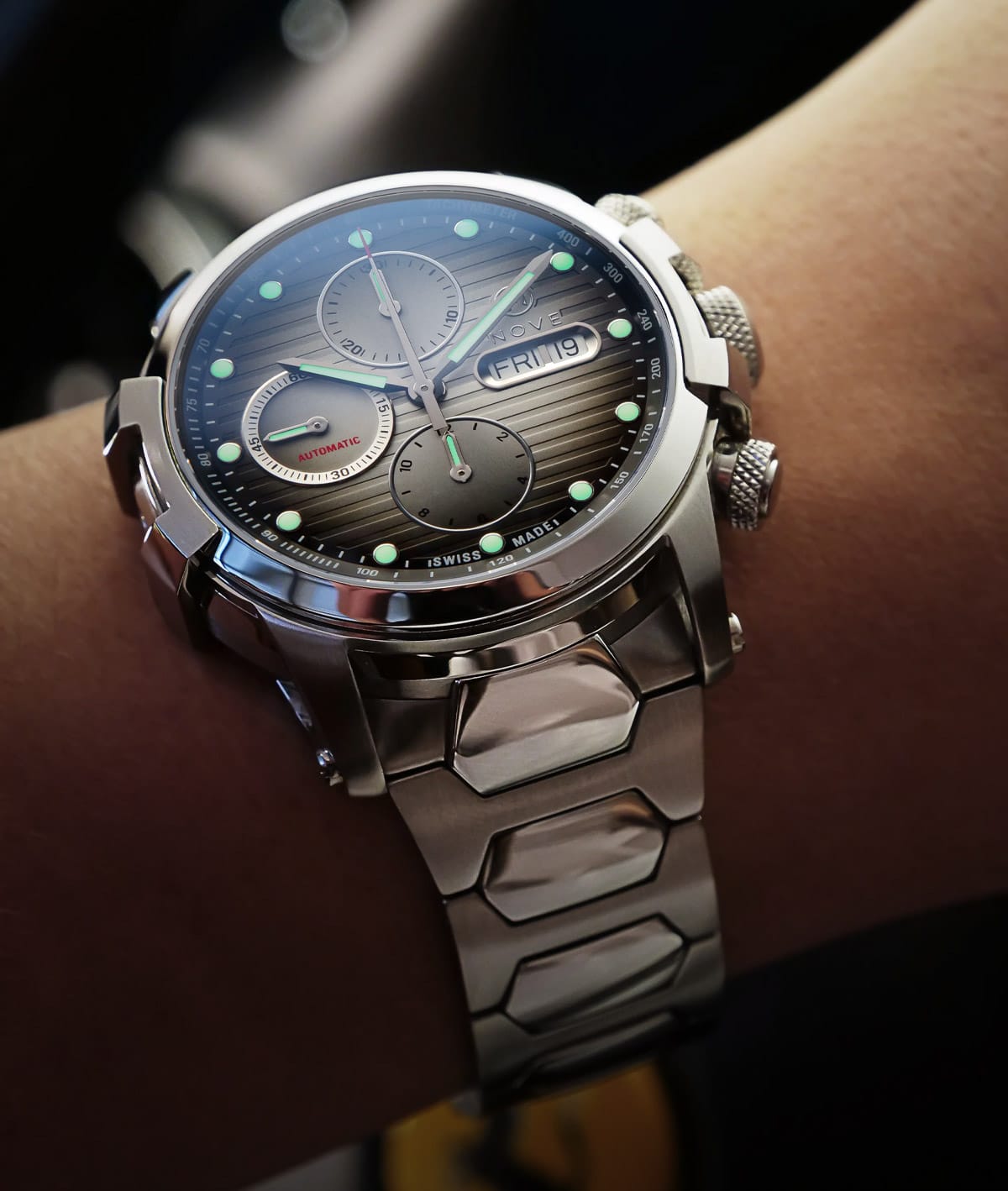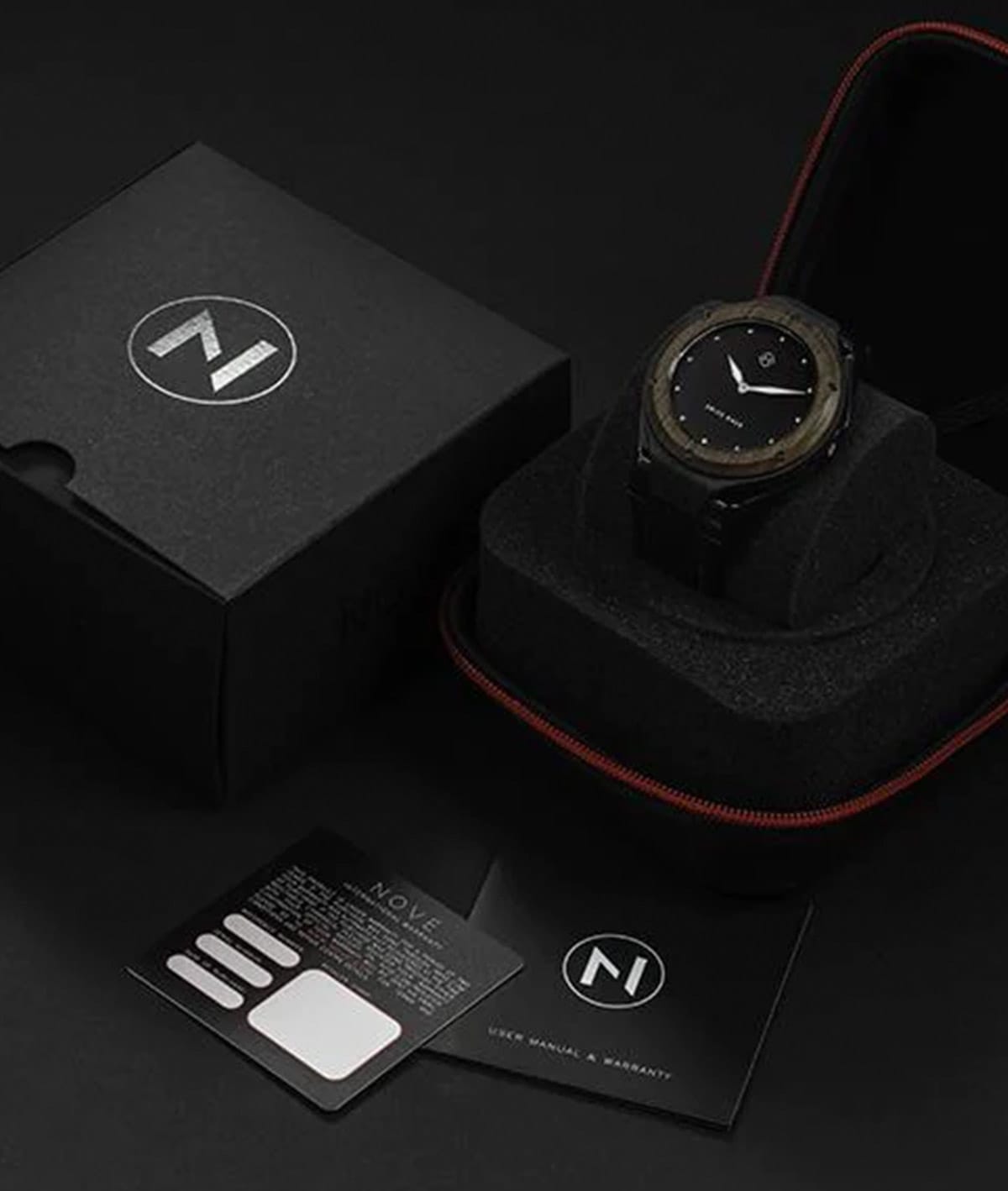How to Maintain Your Watch
Like everything in life, watches endure a significant amount of wear and tear over time. NOVE watch experts have provided some professional advice to help keep your watch in the same condition in which it was bought. Proper watch care & maintenance are important to ensure your watch functions correctly.
Important :
"Be sure the crown is pushed down and screwed in tightly."
About Water Resistant
Remember that water resistant doesn’t mean waterproof – Unless your timepiece has been specifically designed as a diver watch, it’s best not to submerge it in water. The gasket that gives your watch its water resistance grows dry and brittle over time and should be replaced when your watch is serviced. If the gasket between the case and the back of your watch has become dry, your watch is no longer waterproof. Your watch is also subject to the effects of extreme heat and cold. The case expands when exposed to heat, and moisture can enter through microscopic cracks in the case or crystal. Regular, routine service can prevent most of these problems.
Temperature: avoid exposing the watch to temperatures over 60C or 140F or lower than 0C or 32F.
Wear your watch everyday
Remember to wear your watch – More watches have been damaged by leaving them sitting in a drawer than by wearing them every day. The mechanism in a mechanical watch needs motion to keep the lubricants in place and working. Lubricants in an unused watch can dry up or migrate away from critical bearings, thereby damaging the watch’s delicate mechanism. To avoid damage to an automatic watch, place it on a watch winder when you’re not wearing it. Note that even a quartz watch can be damaged by lack of use. If the battery in a quartz watch is never replaced, it will eventually corrode and leak. The acid from a leaking battery can destroy your watch’s delicate movement. Many fine quartz watches have been ruined simply by not replacing their batteries at regular intervals.
Never over-wind your hand-wound mechanical watch
One of the most common mistakes people make when wearing a hand-wound watch is over winding it. A manually wound watch is quite robust and durable, but it can be damaged all the same. Wind your watch at the same time every day and continue turning the crown until you feel a slight resistance. When you feel resistance, stop winding immediately! If there’s any difficulty in turning the crown, do not continue winding. Doing so is likely to damage your watch. Remember to only turn the hands clockwise when setting the time. Turning the hands counterclockwise can damage some watch mechanisms. Also, it’s important to always set the day and date on your watch in the daytime. Making an adjustment late at night when the date wheel is starting to change can also damage your watch.
In This Case
Watch cases also get scratched unless your timepiece is a safe queen. Again, a little skillful polishing goes a long way. Invest in a watch polishing kit, which will include abrasive cloths in varying grades of fineness, to restore various finishes.
Wash It Off
Regardless of the watch you wear, if it spends any time on your wrist, expect it to collect enough of your DNA to rival a crime scene. So don’t forget to clean it from time to time. An old toothbrush and some running water, especially on the caseback and around the strap lugs, will keep your watch nerd buddies from getting sick when they ask to see your classic.
Strap It On
Straps and, to a lesser degree, metal bracelets, are the more disposable components of a watch, but with regular care you can keep them looking good quite a bit lot longer. Rubber straps are durable and great for wet wear but can degrade from exposure to the sun and from the application of bug spray, cologne and sunscreens. So keep them rinsed-off and check for tears around the buckle and springbars regularly, lest you lose your Seamaster to the briny deep when you least expect it.
Use Your Warranty Effectively
NOVE warrants its watches for two years from the date of purchase, absent problems caused by misuse. If you have minor problems with your watch and can wait, it often makes sense to send in your watch for warranty “repair” shortly before the end of the warranty period.






